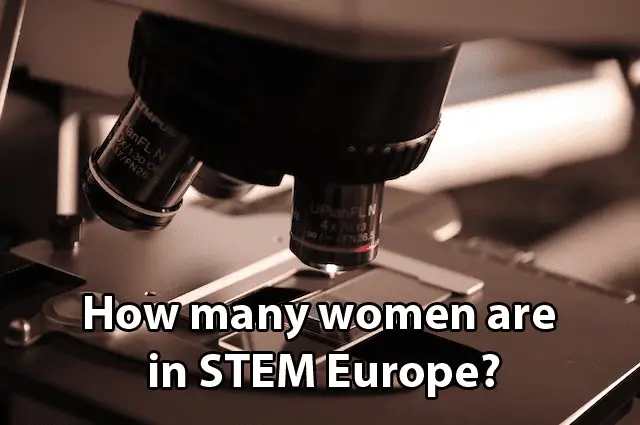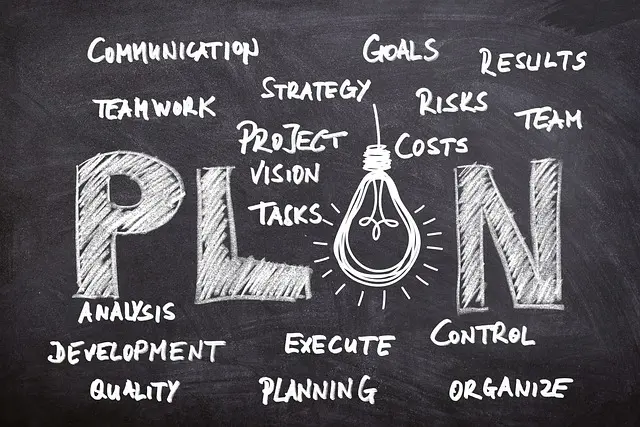
The Representation of Women in STEM in Europe
The representation of women in STEM fields across Europe is a topic of growing concern and interest. While progress has been made in recent years, there remains a significant gender gap in these fields. In many European countries, women continue to be underrepresented in STEM occupations and face various barriers that hinder their participation and advancement. The lack of female representation not only limits diversity and inclusion but also deprives the STEM industry of valuable talent and perspectives.
Understanding the Gender Gap in STEM Fields across Europe
Women’s underrepresentation in STEM fields across Europe continues to be a pressing issue. Despite efforts to bridge the gender gap, there remains a significant disparity between the number of men and women pursuing careers in science, technology, engineering, and mathematics. Research indicates that various factors contribute to this divide.
One key factor influencing women’s participation in STEM is societal stereotypes and biases. Traditional gender roles and expectations can discourage girls from pursuing STEM subjects, leading to a lack of interest or self-doubt in their abilities. Additionally, unconscious biases persist in educational settings and workplaces, influencing the opportunities and support provided to women in STEM. Such biases can manifest in inadequate mentorship, unequal access to resources, and biases in hiring and promotion practices. Recognizing and addressing these biases is crucial in creating a more inclusive and equitable STEM environment for women across Europe.
Factors Influencing Women’s Participation in STEM in Europe
Several factors play a crucial role in influencing women’s participation in STEM fields across Europe. One of the primary factors is societal stereotypes and biases that perpetuate the perception that STEM is a male-dominated domain. These stereotypes create a barrier that discourages women from pursuing careers in science, technology, engineering, and mathematics. The prevailing notion that women are innately less inclined or capable in these fields undermines their confidence and hinders their progress.
Another significant factor is the lack of female role models and mentors in STEM fields. When women lack representation and guidance from successful women in STEM, it becomes harder for them to envision themselves succeeding in these fields. Inadequate exposure to inspiring role models limits their aspirations and reinforces the idea that STEM is not for them. To encourage more women to participate in STEM, it is crucial to highlight successful women in these fields and provide mentorship opportunities to support and guide aspiring female professionals.
Initiatives and Programs Promoting Women’s Involvement in STEM Europe
Various initiatives and programs have been implemented across Europe to promote and encourage women’s involvement in STEM fields. One such initiative is the Women in Science and Engineering (WISE) campaign, which aims to inspire and support young girls and women to pursue careers in STEM. The WISE campaign organizes workshops, mentoring programs, and conferences to provide opportunities for networking and showcasing the achievements of women in STEM. Through these efforts, the campaign seeks to challenge gender stereotypes and biases that often deter women from pursuing STEM careers.
Another program that has gained recognition is the EU Framework Program for Research and Innovation, Horizon 2020. With a dedicated commitment to gender equality in research and innovation, Horizon 2020 aims to increase the participation of women in STEM by promoting gender balance in its projects. It provides funding for research projects that actively involve women scientists and engineers and encourages the integration of gender dimension into research content. By emphasizing gender equality and inclusivity, Horizon 2020 strives to create a supportive environment where women can thrive in STEM fields throughout Europe.
Challenges Faced by Women Pursuing Careers in STEM in Europe
Women pursuing careers in STEM in Europe face a range of challenges that can hinder their progress and success in these fields. One of the primary challenges is the persistent gender bias and stereotypes that continue to prevail. Despite efforts to promote gender equality, women in STEM are often subjected to assumptions about their abilities, competence, and commitment compared to their male counterparts. This bias can manifest in various ways, such as being overlooked for opportunities, receiving less recognition for their work, or facing prejudice and skepticism about their capabilities. These biases not only create a hostile environment for women but also contribute to a lack of representation and diversity in STEM industries.
Another significant challenge faced by women in STEM in Europe is the lack of adequate support systems and networks. Women often find themselves isolated in male-dominated environments, which can impede their professional growth and limit access to mentorship and guidance. The absence of role models and limited networking opportunities further restrict their ability to navigate the complexities of STEM fields effectively. Additionally, women often struggle to find a work-life balance, as long working hours and inflexible work arrangements are prevalent in many STEM industries. This challenge affects women disproportionately, as societal expectations and traditional gender roles can add additional pressures and barriers to their career advancement.
Success Stories: Inspiring Women Making Strides in STEM Europe
Success Stories: Inspiring Women Making Strides in STEM Europe
In recent years, there have been numerous success stories of women who have made significant strides in the field of STEM in Europe. These women have not only achieved personal success but have also become role models for aspiring young girls looking to pursue careers in these traditionally male-dominated fields. Take, for example, Dr. Maria Lopez, a renowned physicist from Spain. Driven by her passion for understanding the mysteries of the universe, she has made groundbreaking contributions in the field of astrophysics. Her research on black holes and dark matter has not only expanded our knowledge of the cosmos but has also inspired a new generation of scientists, both men, and women, to explore the wonders of the universe.
Another inspiring success story comes from Finland, where Dr. Anna Lehtinen has made significant strides in the field of computer science. Starting her journey as a young girl fascinated by technology, Dr. Lehtinen went on to become a leading expert in artificial intelligence and machine learning. Her groundbreaking research on neural networks has revolutionized the field and has the potential to bring about significant advancements in various industries. Dr. Lehtinen’s dedication and achievements serve as a testament to the remarkable potential of women in STEM and continue to inspire young girls in Europe and beyond to pursue their passion for technology and innovation.
Promoting Diversity and Inclusion in European STEM Industries
European STEM industries have been actively working towards promoting diversity and inclusion within their sectors. Recognizing the significant underrepresentation of certain groups in STEM fields, this ongoing effort aims to create a more inclusive environment where individuals from all backgrounds can thrive. Various strategies have been implemented to foster diversity, including targeted recruitment programs, mentoring initiatives, and leadership development opportunities. By proactively addressing barriers and biases, European STEM industries seek to create a level playing field where talent and innovation can flourish.
One key aspect of promoting diversity and inclusion in European STEM industries is the recognition of the unique challenges faced by underrepresented groups, such as women and minority communities. Efforts are being made to address these challenges through the implementation of inclusive policies, such as flexible work arrangements, childcare support, and anti-discrimination protocols. Additionally, organizations are focusing on creating inclusive cultures where diversity is not only acknowledged but celebrated. These efforts not only aim to increase representation but also to create a supportive and inclusive environment where all individuals can contribute and succeed.
Examining the Education System’s Impact on Women in STEM Europe
The education system plays a crucial role in shaping the representation of women in STEM fields across Europe. It is widely acknowledged that early exposure to science, technology, engineering, and mathematics subjects can greatly influence a student’s interest in pursuing a career in these areas. Unfortunately, studies have shown that there is still a significant gender gap in STEM education, with fewer girls opting to study these disciplines compared to their male counterparts. This gender disparity can be attributed to various factors, including societal stereotypes and biases that discourage girls from pursuing STEM subjects. Additionally, limited access to resources and opportunities, as well as a lack of female role models in the field, further contribute to the underrepresentation of women in STEM education.
Addressing Stereotypes and Biases in the STEM Field in Europe
Stereotypes and biases in the STEM field continue to hinder the progress of women in Europe. These deeply ingrained societal beliefs often portray women as less capable or interested in pursuing STEM careers, leading to limited opportunities and representation in these fields. These stereotypes suggest that women have certain innate qualities that make them less suited for STEM, such as being less logical or mathematically inclined, and this perception can unintentionally discourage young girls from exploring their interest in science, technology, engineering, and mathematics.
To address these stereotypes and biases, it is crucial to challenge and debunk the misconceptions associated with women in STEM. This can be achieved through promoting positive role models and showcasing the achievements and contributions of successful women in these fields. By highlighting the diversity and capabilities of women in STEM, it can help young girls envision themselves in these careers and break free from the constraints of traditional gender roles. Additionally, educational institutions and STEM organizations must work towards creating inclusive environments that foster equal opportunities and provide mentorship and support for women pursuing STEM careers. By actively addressing stereotypes and biases, it is possible to create a more inclusive and diverse STEM workforce in Europe.
Future Prospects: Encouraging More Women to Pursue STEM in Europe
Future Prospects: Encouraging More Women to Pursue STEM in Europe
The future prospects for women in STEM fields in Europe are promising, but there is still work to be done to encourage more women to pursue these career paths. One key aspect is the need to address stereotypes and biases that persist within the STEM field. By challenging these stereotypes and promoting a more inclusive environment, women can feel empowered to explore and excel in STEM disciplines. Additionally, it is important to examine the education system’s impact on women in STEM. By ensuring equal opportunities and providing support at every educational level, more women can be inspired to pursue STEM subjects and careers.
Another crucial factor in encouraging more women to pursue STEM in Europe is the availability of role models and success stories. Highlighting the achievements and contributions of women already making strides in STEM can inspire and motivate others to follow in their footsteps. Sharing these success stories can also help to debunk misconceptions about the field and encourage more women to consider STEM as a viable and fulfilling career option. Furthermore, initiatives and programs promoting women’s involvement in STEM can play a significant role in attracting and retaining female talent in these fields. By offering mentoring, networking, and professional development opportunities, these initiatives can provide the necessary support system for women to thrive in STEM.












